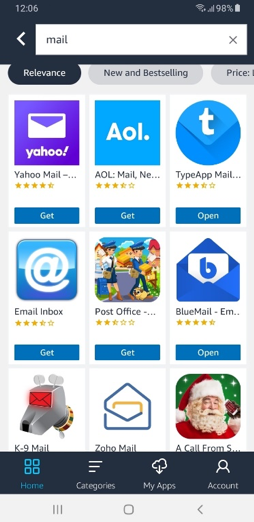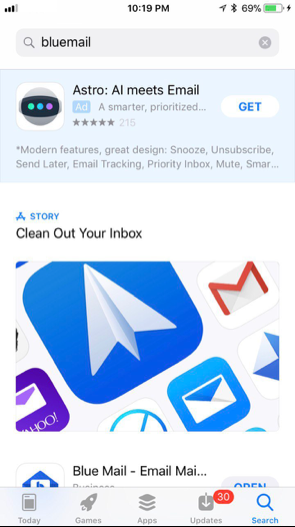Apple intentionally designed the iOS App Store in a manner that increases user search costs and discourages users from evaluating a high number of applications in response to any particular query.
Apple’s layout for the iOS App Store’s “Search” feature forces a user to scroll significantly in order to reach many – and sometimes any – third-party applications. Unlike other application marketplaces, Apple takes up significant room in the earch interface for paid advertising and Apple-selected “Stories” featuring only the applications Apple chooses to make discoverable by users, to the point where a user’s requested application may not be visible (or may be barely visible).

Google Play 
Amazon AppStore
Apple, in contrast, designed the iOS App Store user interface to offer users far fewer choices, and to force users to take affirmative action before they can view multiple options. in response to a direct search for “BlueMail”, Apple’s iOS App Store has at times been designed to first direct users to a large-sized paid advertisement occupying roughly 30% of the screen. Apple would then direct users to an Apple-selected “Stories” box (an Apple-selected lists of applications) that occupies nearly 50% of the screen.

